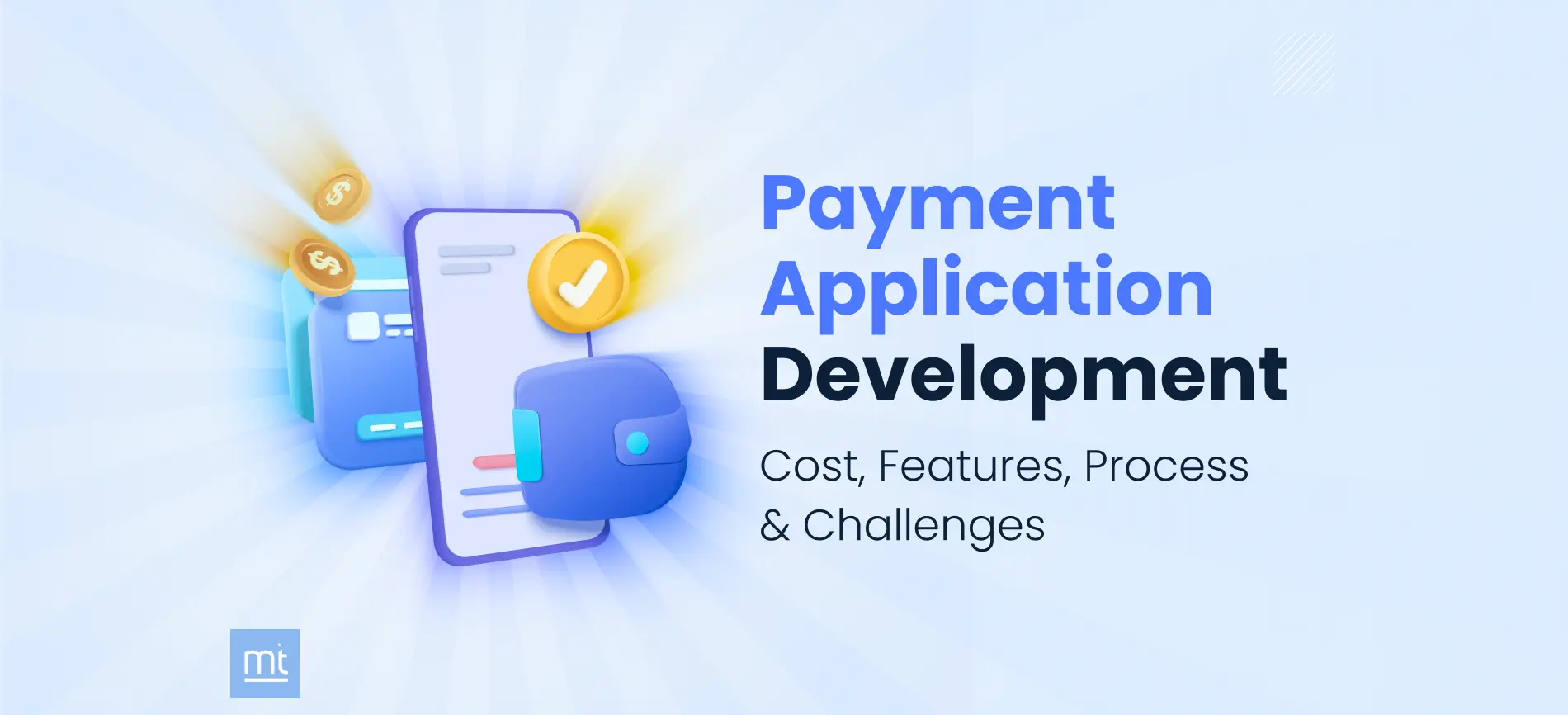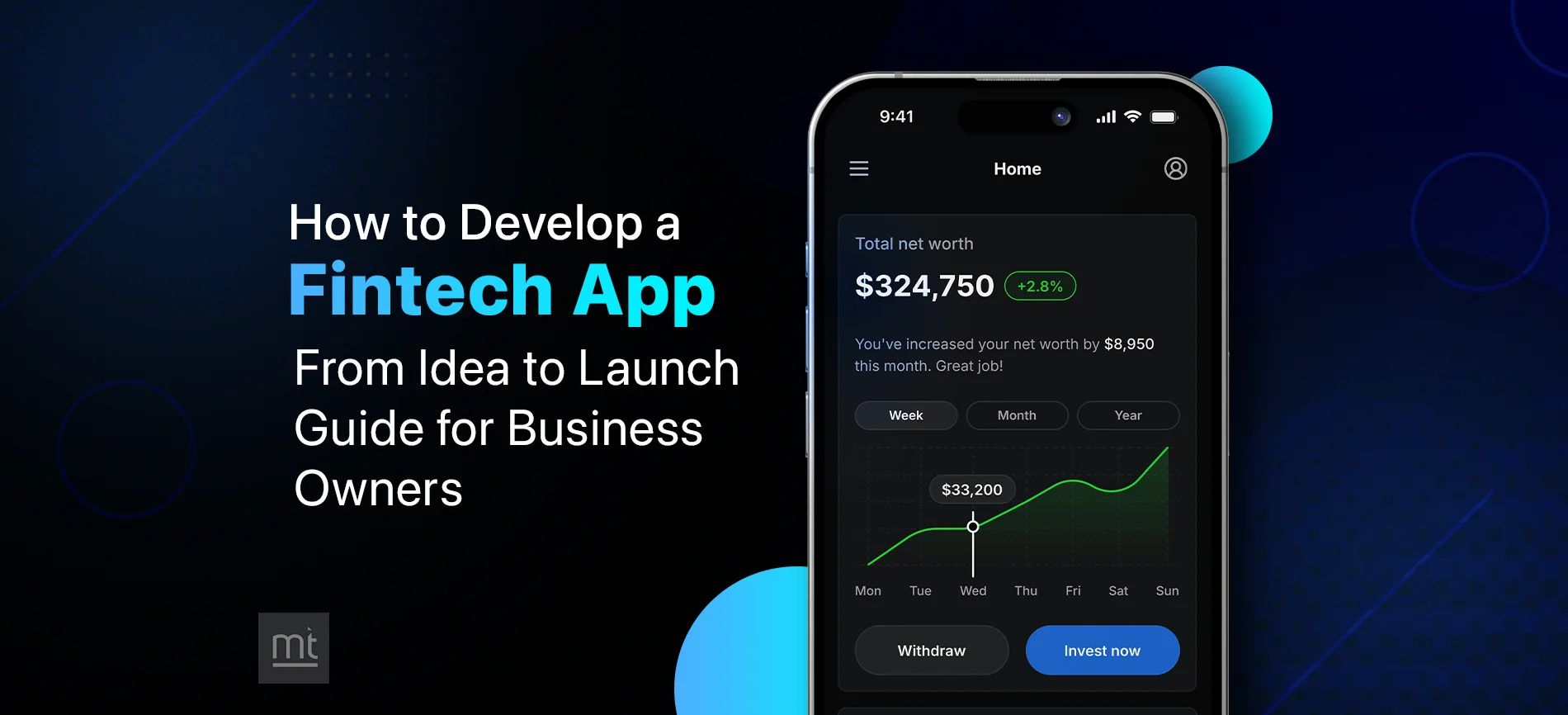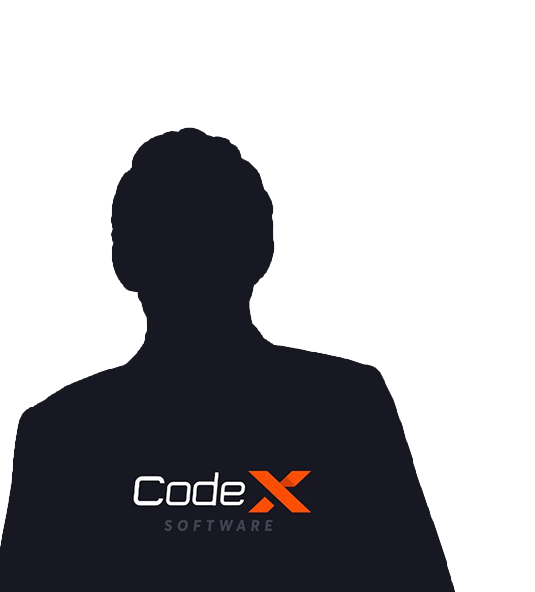Introductoin:
SPAs and MPAs are the primary web application architectures. Single-page applications enable users to move between different system modules without refreshing the whole page. Nevertheless, multiple pages are charged each time the user clicks one. SPAs are faster and guarantee more convenience for users than MPAs, which might be suitable for blogs or news websites.
Facebook, Twitter, and Instagram are examples of social media with nonstop main feed scrolling that allows a continuous loop. This is SPA magic. However, if these platforms were multi-page apps, the user would skip as the feed expires. As of 2022, Statista said that JavaScript and HTML/CSS dominated the worldwide software development community. HTML/CSS was used by 53%, and JavaScript by 63.6%.
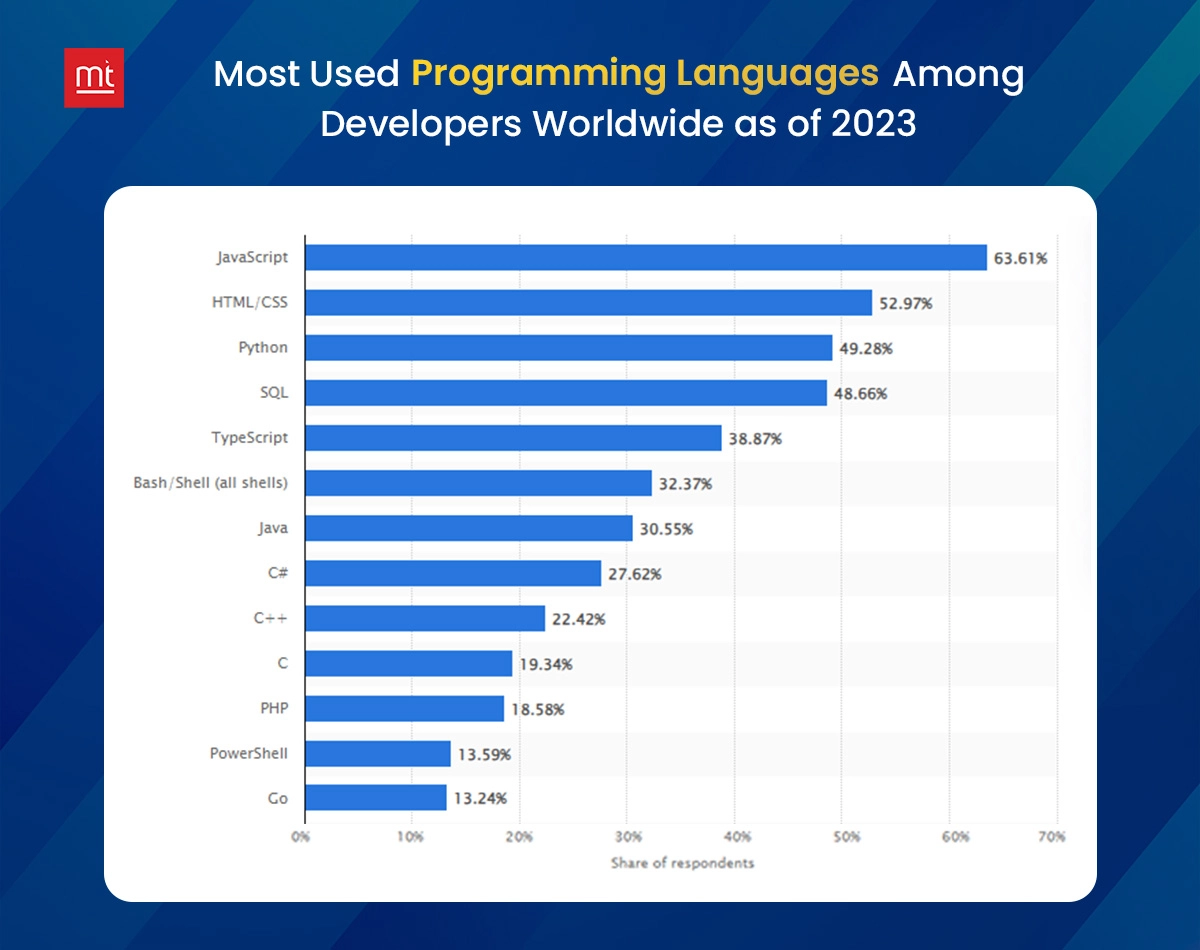
This article will evaluate SPA vs MPA, single-page application vs multi-page application, We will thoroughly compare these two options and help you decide which works best for your business online presence.
About Single Page Applications
An innovative design approach that uses JapaScript's ability to manipulate DOM elements on the page is single-page applications (SPA). The user does not need to refresh or navigate to a different page. Thanks to SPA, they can keep interacting with the page even while new elements are being fetched and updated. You can save time using this app instead of waiting for other pages to load. Instead, it loads everything at once or incrementally as you scroll.
Advantages of Single-Page Application
Here are some must know advantages of investing in Single page applications:
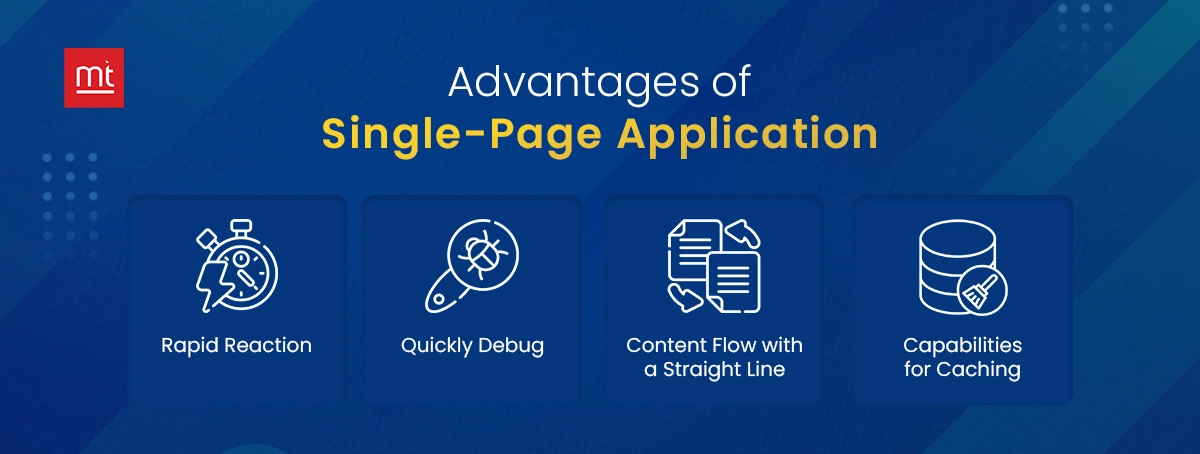
1. Rapid Reaction
Compared to multi-page applications (MPAs), single-page apps have the advantage of loading faster. The server directly provides SPAs with a wealth of reference data, including the page structure and layout. Data is added to them when the user makes a request. There is far less waiting time and more user engagement because browser-to-server communication only occurs through incremental data requests.
2. Quickly Debug
Most single-page applications (SPAs) are built using React and Vue.js, frequently combined with Chrome's browser-based developer kit. These tools make debugging a breeze in the browser, a huge time saver for maintaining SPAs. In real-time, the coder can view the outcomes.
3. Content Flow with a Straight Line
Another benefit of single-page applications is the linear arrangement of content. The content is presented linearly, making it easy for users to navigate. The various pages can load one after another to make it easier for the user to scroll to any page. This arrangement makes the user's journey easier because they won't have to click on multiple links.
4. Capabilities for Caching
All of the necessary data is stored on the server in single-page apps. It is also possible to cache the data together since it is received in a single bulk. This method enhances user engagement with the source while decreasing loading delays. Special requests can only be fulfilled for certain non-cached content.
Disadvantages of Single-Page Application
Users' lives are improved when they have access to advanced technology. On the other hand, there are some downsides to being sophisticated. There are some ways in which SPAs complicate matters rather than simplify them. Let's take a look at the downsides of single-page apps.

1. Optimizing for Search Engines (SEO)
JavaScript is the backbone of single-page web applications. Therefore, search engines that do not execute JavaScript will not efficiently index the page's content. Making a copy of the page in HTML format—which crawlers can read—could solve this problem. However, the price of SPA applications will rise due to the upcoming mobile app development trends.
2. Safety Measures
Apps with just one page are unsafe because they are easy targets for cross-site scripting (XSS) attacks. On rare occasions, the user's private information might be leaked. A limited number of details are shown to the user. Nevertheless, there is still a lot of data that the system could have loaded. Because of screen size limitations, the user can only see a limited amount of content at any time.
Examples of Single-Page Application

- A classic SPA. After loading a single HTML page, it dynamically updates the map and content as users zoom in/out or search for locations.
- Twitter's web application is a SPA, so users can scroll through tweets, post updates, and interact with content without page reloads.
- SPA-based project management tool. Users can create boards, add cards, and move them between lists without page refreshes.
- GitHub's SPA web interface lets developers browse repositories, manage issues, and collaborate without interruption.
About Multi Page Application
Apps that run on the web and have more than one page are called multi-page applications (MPAs). Whenever a user clicks on a link, these apps refresh the pages. These apps are just a collection of individually built web pages. Links to such websites, leading to various pages, might be found in an overwhelming number.
As it compiles various pages, a multi-page application necessitates data transfer between the server and the browser and multiple UI design layers.
Advantages of Multi-Page Application
Multi page application offers impressive benefits to businesses. Here we have covered the list of best benefits of choosing multi page applications:
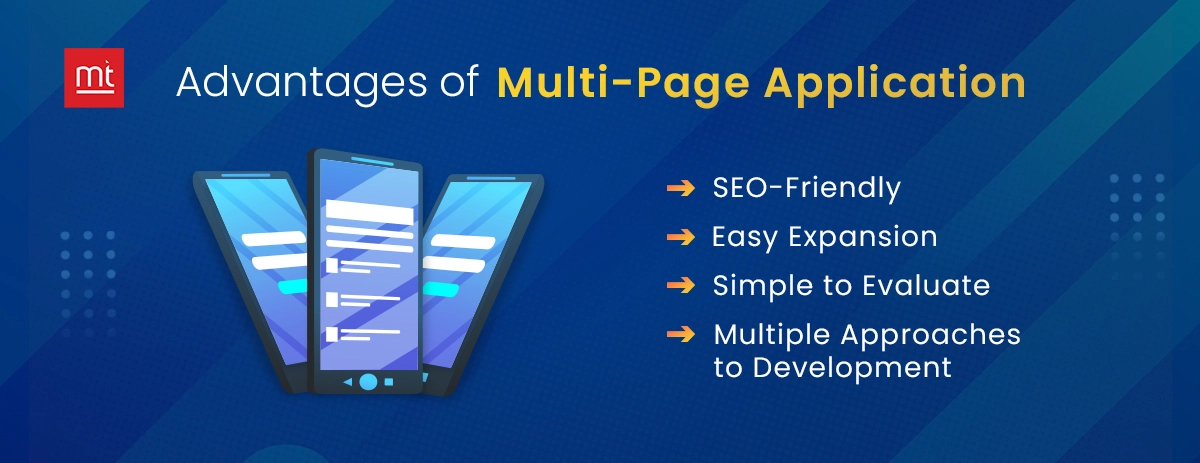
1. SEO-friendly
A multi-page application is the way to go. Businesses that create apps for mobile devices and the web aim to have their service pages appear high in search engine results. So, they have distinct service pages and employ search engine optimization to rank them. No SPA can pull that off. There is no doubt that MPAs are the optimal option for this.
2. Easy Expansion
Multiple pages make up a multi-page application. A website can have an unlimited number of pages. There are no restrictions on adding additional product pages either. Customization of new pages is another option that is available to you.
3. Simple to Evaluate
With MPAs, integrating with Google Analytics is a breeze. You can't get valuable information about your page visitors without it. In this approach, you can identify the most popular pages and learn which brings in the most visitors. By delving into this analysis, you can implement numerous enhancements to the website and various areas that require attention.
4. Multiple Approaches to Development
When it comes to developing multi-page applications, there are several ready-made solutions available. Because of this, creating an MPA becomes a breeze. Consider the e-commerce platform Magento as an example.
Disadvantages of Multi-Page Application
Besides advantages, multi page applications comes with some disadvantages as well. Here you go with top disadvantages to help you make right choice for MPA:
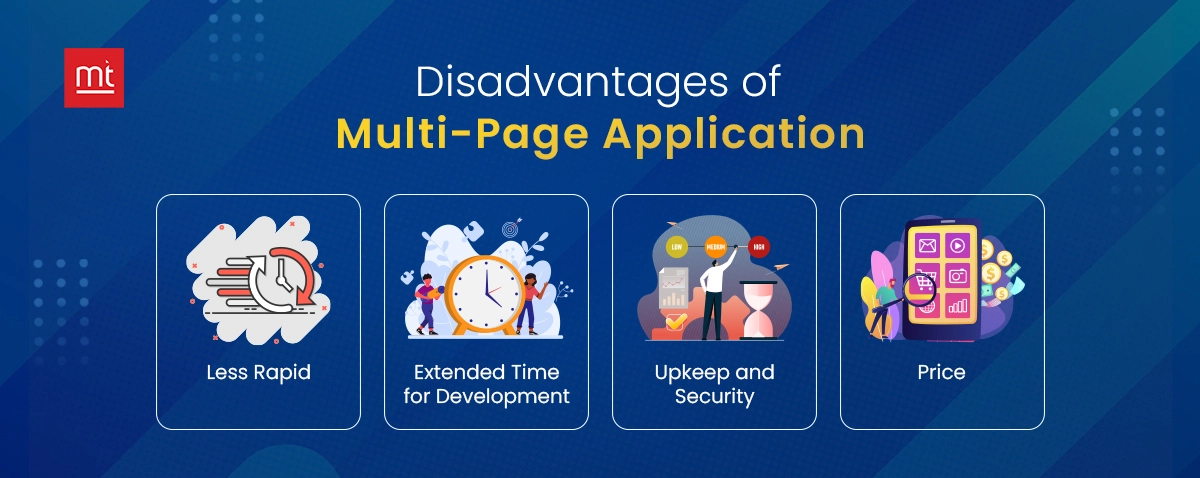
1. Less Rapid
Apps with multiple pages load more slowly than those with just one. Each time a user clicks on a tab, it refreshes. The execution of an action triggers the refreshment of resources like CSS, HTML, and JavaScript. Consequently, it affects how quickly and efficiently a web app or website loads for mobile app ideas.
2. Extended Time for Development
Each component, including the front and back end, is coded from the ground up. Separating the front end and back end could also be challenging. Additionally, programmers ought to make use of frameworks. Because of this, its development is slowed down.
3. Upkeep and Security
Constantly updating and maintaining a website is a complex task, and the website's clumsiness further adds to the difficulty. The developer also has the difficult task of making sure every page is secure, which makes the procedure tedious. Developers at Radixweb, on the other hand, pay close attention to application management and maintenance procedures.
4. Price
The primary distinction between single-page and multi-page applications, which will be discussed in a later section, is the requirement for a server, which can lead to additional expenses.
Examples of Multi Page Application

- Amazon and eBay are MPAs with separate pages for product listings, shopping carts, checkout, and user accounts.
- WordPress and Medium are MPAs with multiple blog post pages, author profiles, comment sections, and administrative dashboards.
- MPAs like BBC and The New York Times have pages for articles, categories, search results, and multimedia.
- Facebook and LinkedIn are MPAs with separate pages for user profiles, news feeds, messaging systems, and group discussions.
Single Page vs Multi Page Application: End to End Differences to Make the Right Choice for Business
Single-page and multi-page applications are both best in their respects, serving online presence for businesses. Despite the popularity of each, there are some points where the battle begins to get the best solution for business. Here are end-to-end differences between Single page vs Multi-page applications:
# 1. Development
SPAs are faster to construct since they employ JavaScript frameworks like React, Angular, or Vue.js and have more straightforward designs. Users don't have to refresh the page frequently because they load once and alter the information automatically. However, MPAs may take longer to develop since each page must be built and connected independently.
#2. Time to Market
Due to their speed of production, SPAs reach the market quickly. Coders may concentrate on creating a single script that works on several devices using SPAs. Responding fast to consumer feedback and market developments helps businesses remain ahead.
#3. Scalability
MPAs and SPAs can handle scalability, but SPAs are superior at managing severe loads and numerous users since they can distribute work between the client and server. MPAs may expand successfully if constructed and tuned correctly. Spreading the load between machines or employing caching solutions may help.
#4. Security
SPAs may suffer XSS and CSRF vulnerabilities because they rely on client-side processing and APIs. However, proper protection may reduce these hazards. MPAs may be hacked like other websites, even though each page is produced on the computer.
#5. SEO Requirements
MPAs are better for SEO since search engine bots can understand each page's URL and meta tags. SPAs must work harder to index and crawl moving content. Server-side rendering or pre-rendering may boost SPA SEO.
Difference Between SPA And MPA Comparison Table
Feature | Single Page Applications (SPAs) | Multi-Page Applications (MPAs) |
Architecture | Client-side rendering | Server-side rendering and/or client-side rendering |
Navigation | Uses client-side routing for navigation | Navigates across different HTML pages |
Page Load | Initial page load may take longer, subsequent navigation is faster due to cached assets | Each page load requires a full round trip to the server, potentially slower |
User Experience | Offers a more seamless and responsive user experience as content is dynamically loaded | Slightly slower user experience due to page refreshes |
Development & Maintenance | Requires advanced JavaScript frameworks (e.g., React, Angular, Vue) and APIs for building | Traditional web development with HTML, CSS, and server-side technologies |
SEO | May require additional effort for search engine optimization (SEO) due to limited initial content | Easier to implement SEO strategies with distinct URLs and content per page |
Initial Load | Typically larger initial load size due to loading all necessary assets upfront | Smaller initial load size since each page only loads what's needed |
Server Interaction | Communicates with the server primarily through API calls | Communicates with the server through full page requests |
Data Transfer | More efficient data transfer as only necessary data is fetched and rendered | Less efficient data transfer as entire page content is transferred |
State Management | Utilizes client-side state management for maintaining application state | Relies on server-side state management |
Performance | Faster subsequent interactions due to reduced server load and optimized client-side rendering | May experience slower load times and less responsive interactions |
Scalability | Easier to scale for high traffic due to offloading server resources to client-side | Scaling might require more server resources as each page request consumes server resources |
Offline Support | Requires additional effort to implement offline support using service workers | Can implement offline support using server-side rendering for basic caching |
When to use a Multi-Page Application?
Multi-page apps assist large companies that provide several services and products. Examples include company websites, marketplaces, catalogues, and online stores. Frontend developers must leverage the backend API and a beautiful user interface to provide customers with the finest user experience in multi-page application development.
These companies would need various SEO strategies. Why? To market their goods and services, practically every such organization wants a digital presence and to be discovered in Google, Bing, and other search engines.
When to use a Single Page Application?
Speed is SPA's finest feature. Most single-page app resources are loaded at publishing and don't need to be refreshed throughout use. Only server data transfer changes. Following the application development instructions, the app becomes responsive and answers users' questions without waiting for a client-server connection.
A skilled mobile app development company in USA creates the greatest single-page apps. Backend developers may focus on APIs using it. In contrast, frontend developers can now concentrate on creating a beautiful user interface and the greatest user experience using the backend API.
How does ManekTech help you Build A Single-page or Multi-page Application?
ManekTech is a go-to partner for all your SPA and MPA development needs, ready to create the right solution for your project. We have the best android app developers and iphone app developers with decades of experience working closely with your development requirements to give you the best shot with top notch development.
If you plan to develop single-page or multi-page applications, our team of efficient developers can develop any applications that meet your requirements. At ManekTech, we have no limitation on scalable solutions. Instead we will travel all the miles to meet your development requirements.
Our team is well adapted with best frameworks like React, Angular, and Vue which gives us the upper hand in developing best-in-class applications.
Conclusion
Consider your application's unique demands and requirements before deciding between a single-page app vs multi-page app. Although SPAs are more complicated, they may be the best option if your application needs a lot of user interaction and real-time changes. An MPA, on the other hand, can be the easier and more practical option if your application isn't too complex and doesn't need a lot of processing on the client side.
If you have multiple projects and want the same to make both single-page and multi-page applications develop under one roof, Manek Team is the leading player. Being the best development company, we have the best developers who never miss a chance to develop feature rich applications that are set to meet all your business requirements and give the best user experience. Contact ManeTech today and give a flight to your development requirements.

FAQs
Q 1. What Is the Cost to Develop a Single-Page Application?
Ans: Single-page applications (SPAs) cost differently depending on complexity, functionality, and resources. Due to their enhanced client-side rendering and interaction, SPA mobile app development costs more than standard web apps.
Q 2. Is Single Page Application Faster?
Ans: Single Page Applications (SPAs) load once and dynamically update content without reloading, making them quicker. Minimizing server queries and using client-side rendering for quick content updates minimizes latency and improves user experience.
Q 3. Why Choose a Multi-Page Application?
Ans: Multi-page applications (MPAs) work well for projects with several pages and functions. Search engines can crawl sites more efficiently, making them simpler for smaller projects or SEO.
Q 4. Why Choose a Multi-Page Application?
Ans: Social networks, productivity tools, and dashboards benefit from single-page applications (SPAs), but content-heavy sites and those requiring extensive SEO optimization may not. Initial page loading and search engine indexing are limited.
Q 5. What Is the Benefit of a Multi-Page Application?
Ans: Due to their distinct optimization, multi-page applications (MPAs) are easier to design, maintain, and optimize for SEO. They are ideal for content-centric websites like blogs, e-commerce platforms, and news sites, where pages serve diverse functions and need effective search engine indexing.
About Author
Recent Blogs
Subscribe to Our Newsletter!
Join us to stay updated with our latest blog updates, marketing tips, service tips, trends, news and announcements!


